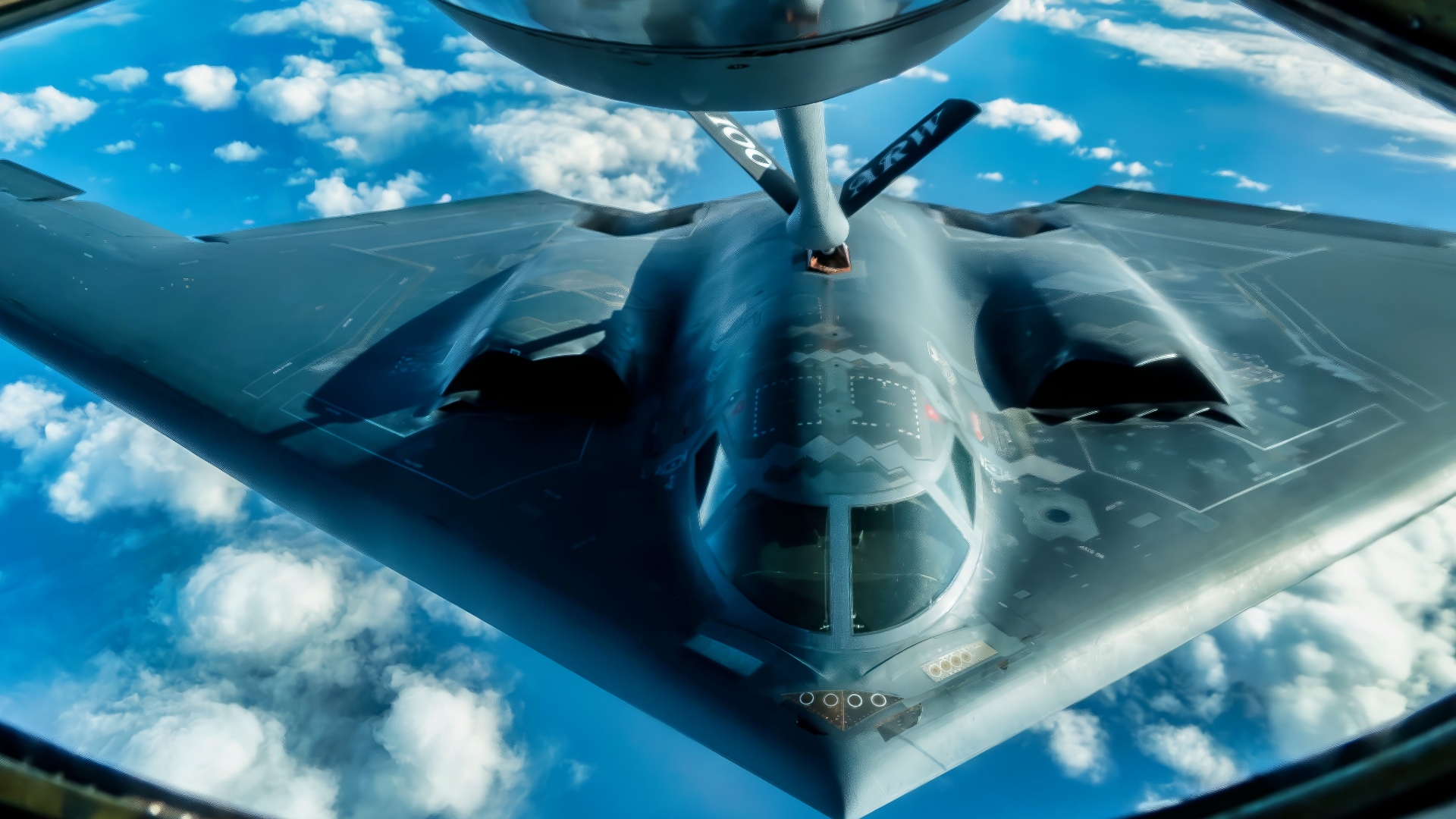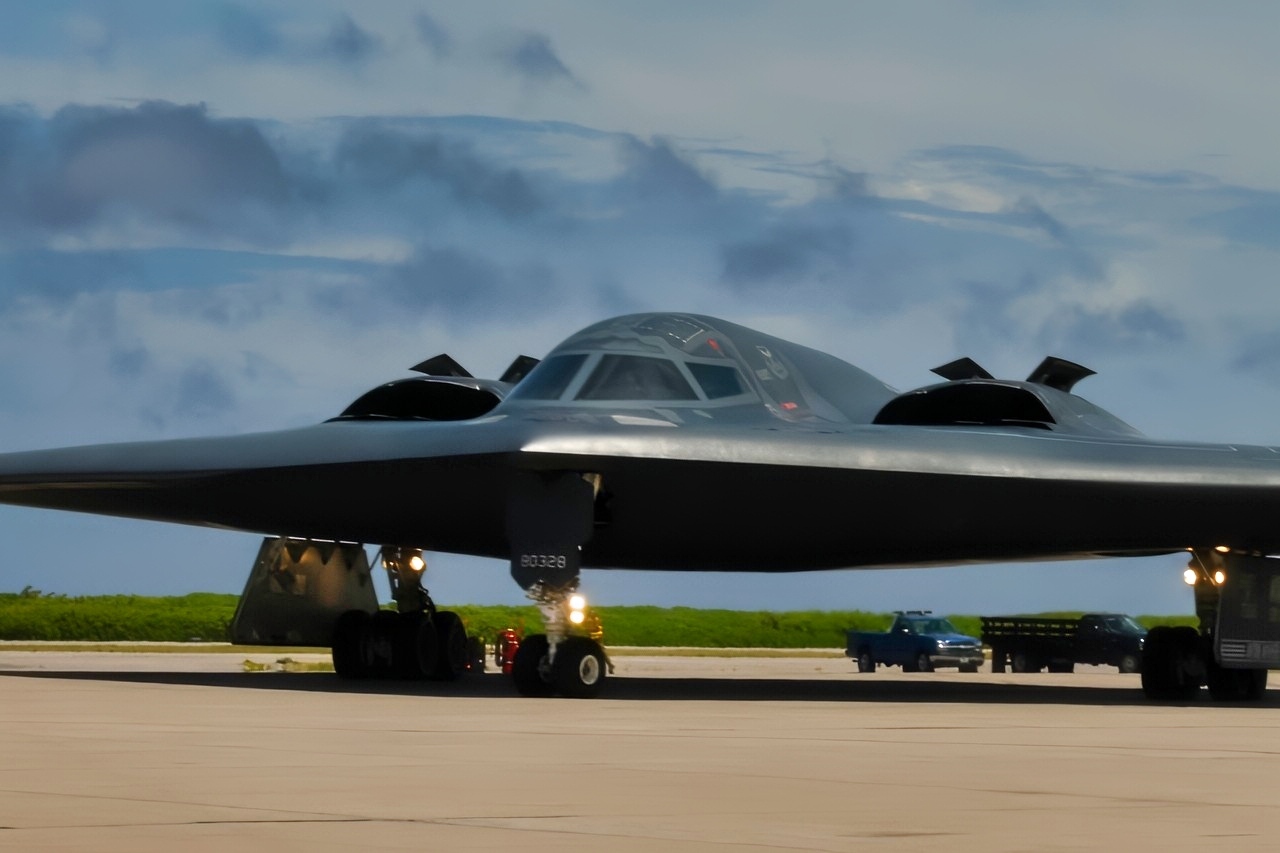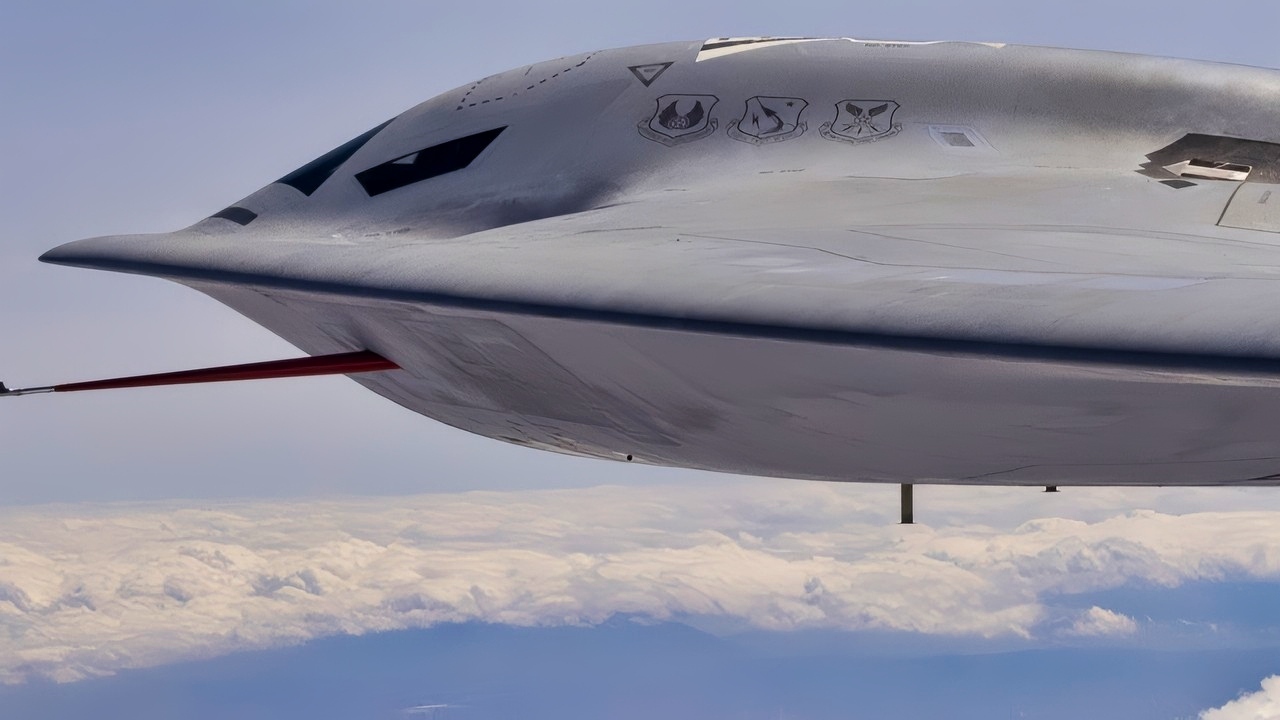Key Points and Summary – China’s H-20 is designed to give Beijing a true long-range, stealth bomber able to hit targets as far as Guam – and potentially the U.S. homeland – from secure mainland bases.
-Likely a B-2-style flying wing with 8,500–10,000+ km range and internal bays for nuclear and conventional weapons, the H-20 would supercharge China’s A2/AD posture across the Second Island Chain.

A B-2 Spirit soars after a refueling mission over the Pacific Ocean on Tuesday, May 30, 2006. The B-2, from the 509th Bomb Wing at Whiteman Air Force Base, Mo., is part of a continuous bomber presence in the Asia-Pacific region. (U.S. Air Force photo/Staff Sgt. Bennie J. Davis III)

A U.S. Air Force B-2 Spirit assigned to the 509th Bomb Wing from Whiteman Air Force Base, Missouri, receives fuel from a 100th Air Refueling Wing KC-135 Stratotanker during Global Thunder 20, Oct. 28, 2019. Global Thunder is an annual command and control exercise that provides training opportunities for all of U.S. Strategic Command’s mission areas, tests joint and field training operations, and has a specific focus on nuclear readiness. (U.S. Air Force photo by Staff Sgt. Trevor T. McBride)
-Engineering and stealth challenges remain, and real capability will depend on tankers, testing, and integration.
-But if it enters service next decade as expected, it will force Washington and its allies to rethink Pacific basing, defenses, and bomber strategy.
The Chinese H-20 Bomber Is Potentially A Game Changer
The H-20 represents a new strategic capability for China, allowing it to project power and threaten U.S. interests across long distances.
The Chinese have been developing the H-20 stealth bomber for a decade. The Chinese seek a modern stealth bomber capable of surviving in a contemporary, contested environment, with the range to operate in the Second Island Chain and beyond.
As a long-range, stealth bomber, it could bypass traditional defenses to strike targets deep within allied territory, such as Guam, or even the U.S. mainland.
This development could compel the U.S. and its allies to allocate more resources to defense, deploy their forces more widely, and reassess their strategic approach to military sanctuaries.
What Is Known About China’s H-20 Stealth Bomber:
There is no official photograph of the H-20, but a photo was posted on Chinese social media of a new large combat aircraft making a test flight, which was speculated to be China’s new secret H-20 stealth bomber. The location and exact date of the imagery were not disclosed.
The aircraft was a “flying wing” design, followed by a chase plane. The indistinct image closely resembles a 2022 photo from a Chinese wind-tunnel test, which featured a bomber similar to the one depicted in Air and Space Forces magazine.
It also resembled the American B-2 Spirit stealth bomber remarkably closely.
The H-20’s focus is on enhancing China’s power projection capabilities and securing its interests in the Asia-Pacific region. In contrast, the US B-21 is designed for global power projection, ensuring the U.S. can maintain its strategic deterrence and respond to threats anywhere in the world.
Long-range Strike Capability:
The H-20 is expected to have a range of up to 8,500 kilometers, allowing it to operate far from China’s shores.

A B-2 Spirit stealth bomber assigned to Whiteman Air Force Base takes off from Oscoda, Michigan, Aug. 5, 2025. Maintainers and pilots conducted a flight crew changeover during Exercise Northern Strike, a National Guard Bureau sponsored training event designed to build readiness with joint and partner forces in all domains of warfare. (U.S. Air National Guard photo by Staff Sgt. Whitney Erhart)

A B-2 Spirit Stealth Bomber, deployed from Whiteman Air Force Base, Missouri, taxis for take off at Naval Support Facility Diego Garcia, in support a Bomber Task Force mission, Aug. 26, 2020. BTF missions allow U.S. Strategic Command to provide persistent, long-term bomber presence to aid in U.S. Indo-Pacific Command’s commitment to a free and open Indo-Pacific. (U.S Air Force photo by Tech. Sgt. Heather Salazar)
However, other analysts in the US government believe that the bomber could have an unrefueled range of over 10,000 km.
The Chinese have released a picture with a plethora of weapons arrayed in front of the aircraft. Still, China has only written about “multi-ton internal storage bays”, without revealing a specific number.
It Is Still Several Years Away:
In July 2022, Chinese state media reported that the bomber was nearing its maiden flight. By March 2024, during the second session of the 14th National People’s Congress, Vice Commander of the PLAAF Wang Wei indicated that the H-20 would be revealed “very soon.”
The U.S. military states that it still does not expect China’s long-awaited H-20 bomber to make its “debut” – unclear whether this refers to its entrance into operational service or its public emergence – until sometime in the next decade.
Building a stealth bomber takes time as well as lots and lots of testing. The Pentagon publishes an unclassified report on China’s military every year. And the H-20 was mentioned.
“The PRC is developing a new generation of long-range bombers, likely named the H-20. The H-20, which may debut sometime in the next decade, will have a range of more than 10,000 km [nearly 6,214 miles], enabling the PLAAF to cover the Second Island Chain and into the western region of the Pacific,” the report added.
“The H-20 bomber’s range could be extended to cover the globe with aerial refueling. It is expected to employ conventional and nuclear weaponry and feature a stealthy design.”
Defense One interviewed an intelligence official, who said the Chinese technology isn’t up to the US standards…yet.
“The thing with the H-20 is when you actually look at the system design, it’s probably nowhere near as good as US [low observable] platforms, particularly more advanced ones that we have coming down,” he said.
“They’ve run into a lot of engineering design challenges, in terms of how do you actually make that system capability function in a similar way to a B-2 or B-21.”

A B-21 Raider is unveiled at Northrop Grumman’s manufacturing facility on Air Force Plant 42 in Palmdale, California, Dec. 2, 2022. The B-21 will be a long-range, highly survivable, penetrating strike stealth bomber capable of delivering both conventional and nuclear munitions. (U.S. Air Force photo by Airman 1st Class Joshua M. Carroll)

B-21 Raider. Image Credit: U.S. Air Force.
Stealth Technology:
Its stealth design could make it very difficult for enemy radar to detect, enabling it to approach targets undetected before launching an attack.
The bomber is designed to be a strategic asset, capable of both conventional and nuclear strikes, which would alter the balance of power in the Pacific region and beyond.
“Campaign-shaping platform”:
Once operational and paired with supporting infrastructure like aerial refueling tankers, the H-20 could be a decisive weapon that shapes the outcome of a conflict, forcing adversaries to react to its presence.
Much of the H-20’s exact capability remains secret, fueling anxiety and speculation about its potential to surpass or match current U.S. stealth bombers.
Once the H-20 is operational in the PLAAF’s arsenal, it would significantly enhance China’s ability to project power and conduct anti-access/area-denial (A2/AD) strategies, particularly in regions like the South China Sea and Taiwan Strait.
This could threaten US bases far from Chinese shores, and alter the strategic calculus in any potential military confrontation or deterrence scenario in the Indo-Pacific region. However, there are still improvements to be made in China’s tanker fleet, further testing, and then applying all that they have learned.
They are still several years away, and by then, the US should have its own new bomber force, with the B-21 Raider in the inventory.
About the Author: Steve Balestrieri
Steve Balestrieri is a National Security Columnist. He served as a US Army Special Forces NCO and Warrant Officer. In addition to writing on defense, he covers the NFL for PatsFans.com and is a member of the Pro Football Writers of America (PFWA). His work was regularly featured in many military publications.
More Military
Could America Have Lost the Revolutionary War?
The Marines Don’t Have Tanks Anymore
The Essex-Class Aircraft Carriers Have An Embarrassing Message for the U.S. Navy
‘New’ Mach 4 MiG-41 6th Generation Stealth Fighter Has Warning for U.S. Air Force
Boeing’s F-47 NGAD 6th Generation Stealth Fighter Is No ‘Mission Impossible’










